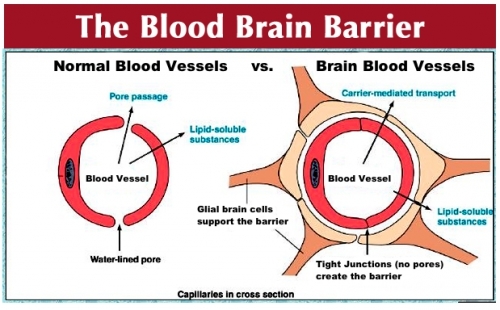Researchers Discover Way To Allow Drugs To Penetrate Through The Blood-Brain Barrier
Source: Thailand Medical News Jan 01, 2020 5 years, 11 months, 3 weeks, 6 days, 11 hours, 28 minutes ago
Biomedical engineers from University of Connecticut have designed a non-toxic, biodegradable device that can help medication move from
blood vessels into
brain tissues, a route traditionally blocked by the body's defense mechanisms. The research findings are published in the PNAS Journal.
Typically, blood vessels in the
brain are lined by cells fitted together tightly, forming a so-called
blood-brain barrier, which walls off bacteria and toxins from the brain itself. But that
blood-brain barrier also blocks medication for brain diseases such as cancer.

Dr Thanh Nguyen, a biomedical engineer at UConn told
Thailand Medical News, "A safe and effective way to open that
barrier is ultrasound. Ultrasonic waves, focused in the right place, can vibrate the cells lining
blood vessels enough to open transient cracks in the
blood-brain barrier large enough for medication to slip through. But the current
ultrasound technology to do this requires multiple
ultrasound sources arrayed around a person's skull, and then using an MRI machine to guide the person operating the
ultrasounds to focus the waves in just the right place. It's bulky, difficult, and expensive to do every time a person needs a dose of medication.”
Now, there is another way: implanted devices can apply
ultrasound locally in the
brain. It's much more precise and repeatable, but most ultrasound transducers contain toxic materials such as lead. And they have to be removed after use, which requires surgery and can harm
brain tissue.
Dr Nguyen knew there could be a better tool for this. His lab specializes in
piezoelectric biomaterials.
Piezoelectrics convert physical strain, such as being bent or compressed, into electricity, and vice-versa. They are the perfect material for transducers, which use electricity to create vibration.
Dr Nguyen's graduate student Eli Curry figured out how to spin poly L-lactic acid (PLLA), a biodegradable polymer, into tiny nano-fibers just 200 nanometers wide and several tens to hundreds of microns long. When the researchers applied a high voltage during this spinning process, the fibers stretched and aligned. Thus aligned, they could be woven into a mesh. And the alignment of the fibers heightened their
piezoelectric response, allowing the nano-fiber PLLA to vibrate more powerfully using much less electricity than a regular film of the polymer would have. These highly
piezoelectric nanofibers enable the researchers to fabricate a sensitive biodegradable implanted sensor which can wirelessly measure intra-organ pressures. The same sensor can also act as an ultrasonic transducer.
Poly L-lactic acid (PLLA) is often used for dissolving surgical sutures and is a very safe, bio-compatible material. Accordingly, when graduate student Thinh Le impl
anted the PLLA transducers into mice, he found that the transducers were safely biodegraded. Most significantly, the device can generate well-controlled
ultrasound to locally open the
blood-brain barrier, consequently helping medications injected into the
blood access the
brain tissue. This
ultrasound device can even act as an speaker to generate audible sound or play music.
Dr Nguyen added, "This is an exciting proof of concept; it's the first biodegradable transducer made of common and safe medical materials,"
He says the team still needs to work out how to optimize the intensity to get good cracks in the
blood-brain barrier, wide enough for large drug molecules to pass through, without damaging the
blood vessels or the
brain. And for the device to be approved for use in humans, it would need to be tested for longer periods of time, in animals larger than mice.
Reference : Eli J. Curry et al. Biodegradable nanofiber-based piezoelectric transducer, Proceedings of the National Academy of Sciences (2019). DOI: 10.1073/pnas.1910343117
